While Asana provides teams with a medium for creating visually-appealing projects, many teams would like a curated, high-level picture of their projects & tasks. To better visualize your Asana projects in a consumable, simple to understand roadmap, users can create a one-way connection with Asana which allows them to pull content into their roadmaps and visualize it against other projects across all the tools your team uses on a daily basis.
Getting Started with Asana
Linking Strategic Roadmaps to your Asana Instance
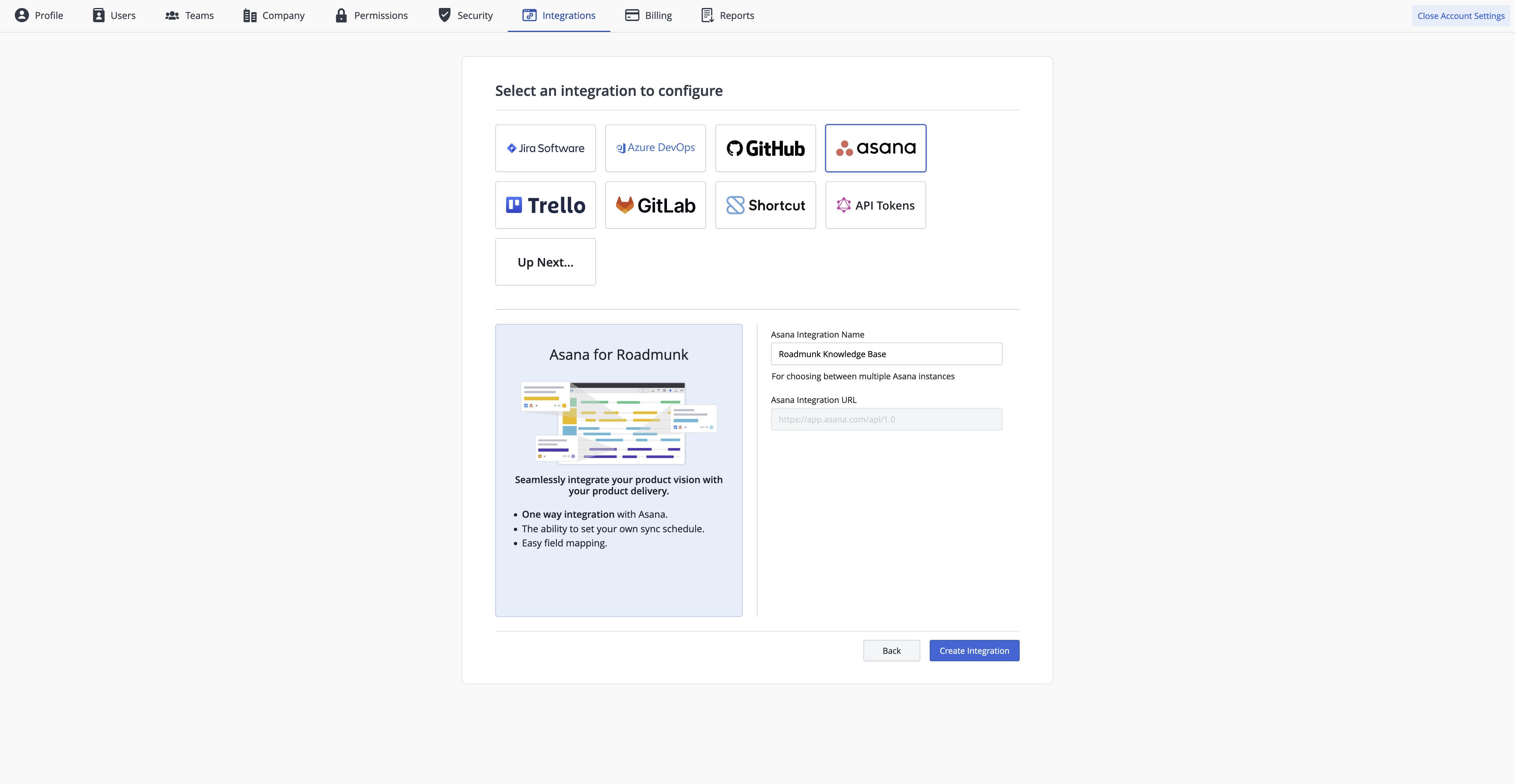
In order to connect your Roadmaps to your instances & projects in Asana, an Account Admin on your Strategic Roadmaps account will need to establish the connection between Strategic Roadmaps and Asana first. Once this connection is established, users will be able to view and select this integration option during their on-roadmap setup and save both instance & credential details for future setup of additional roadmaps.
Generating Credentials for Strategic Roadmaps in Asana
In order to authorize the data transfer between Strategic Roadmaps and Asana, Strategic Roadmaps relies on a user-generated credential that allows the user to view and pull their data from their projects. In this case, we require a Personal Access Token (PAT) generated in Asana as your credential and during the roadmap setup will allow you to set a Credential Label so you can easily differentiate this particular token from others you may use (in the case of teams working across multiple active Asana deployments).
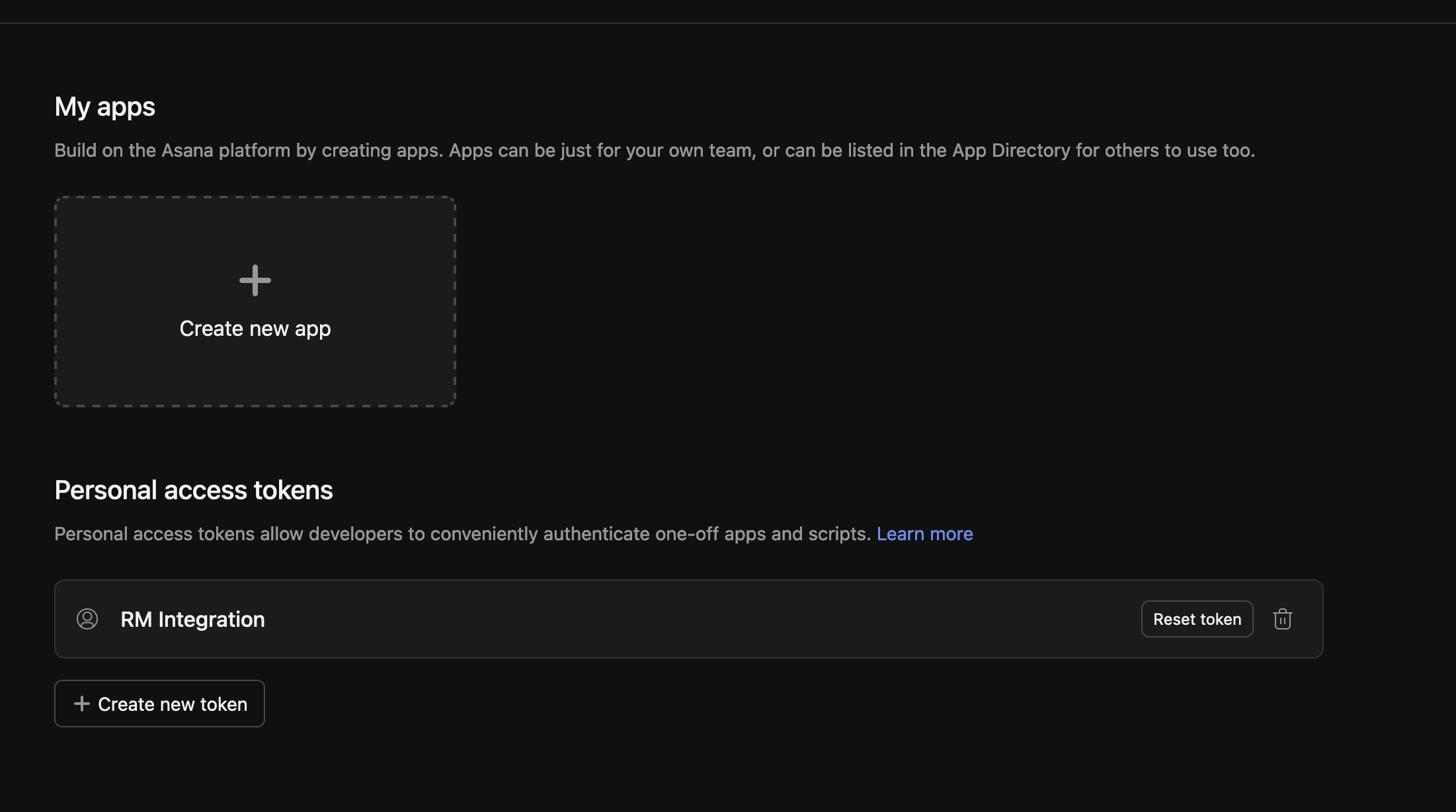
Users can generate a Personal Access Token from the Settings menu in Asana. For more details see Asana's article on creating a personal access token.
-
In Asana, click on your avatar and select My Settings > Apps > Manage Developer Apps.
-
Click + Create new token.
-
Specify a Token name. It can be anything and does not need to match the Credentials Label in Strategic Roadmaps.
-
Check the I agree… statement.
-
Click the Create token button.
-
Click the Copy button and paste the value into the Personal Access Token field in Strategic Roadmaps.
For the sake of user & data security, tokens can be reset or removed by either the user or their administrator from the Developer Apps menu. For more details regarding token expiry, please refer to the line item in the What to Expect After Integrating section.
Connecting your Roadmaps to Asana
Integrations Setup Walkthrough
It's a quick and easy process to set up an integration between your Asana projects and your team's roadmaps in Strategic Roadmaps. The setup process can be broken down into three stages: triggering the integration, applying synchronization settings, and applying field and filter settings. Once those have been completed, your roadmap will be set to pull and visualize data from Asana as needed.
Step 1 - Triggering the Roadmap Integration
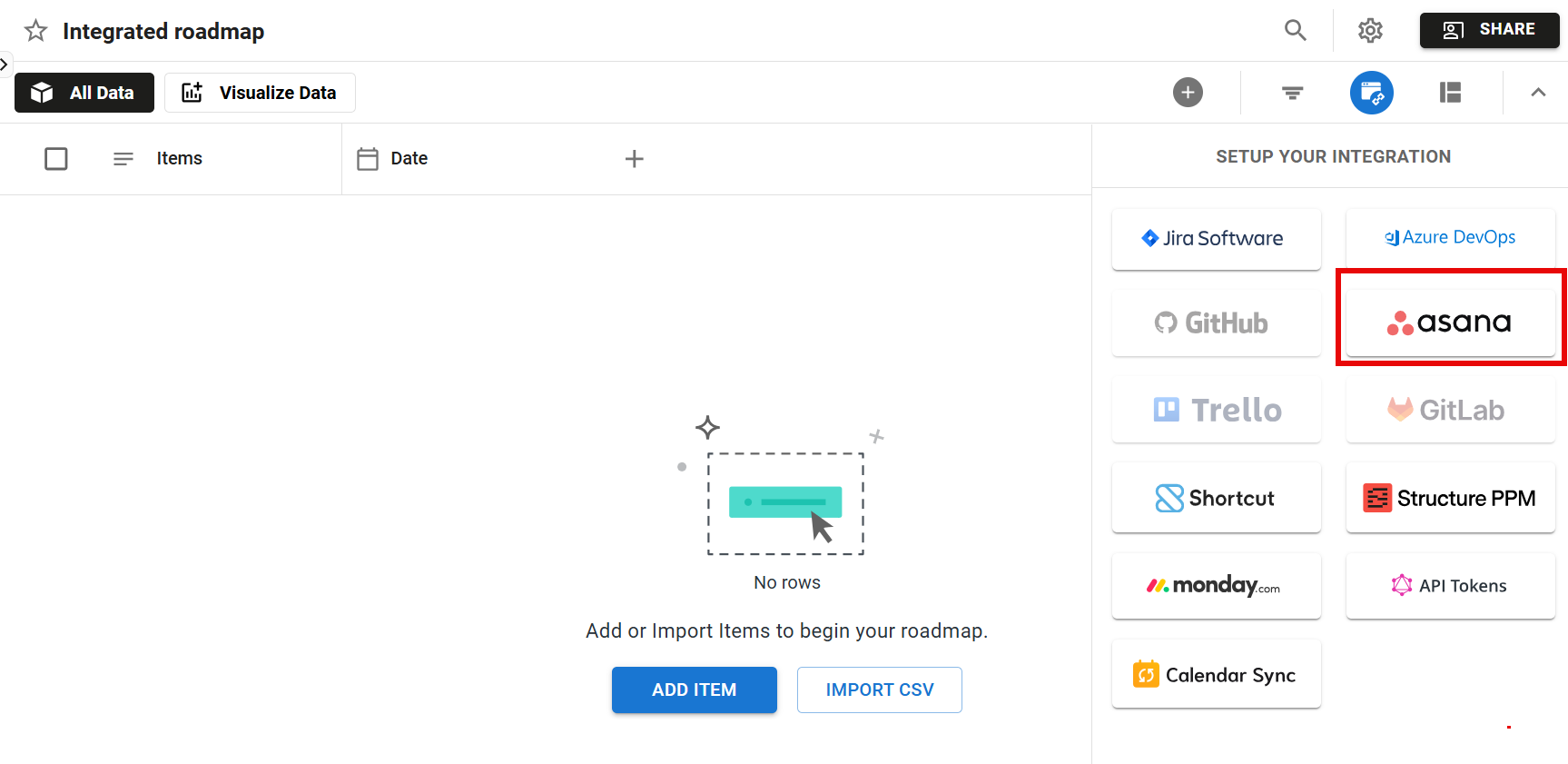
Once the integration connector has been set up by your Account Admin, you will be able to select the Asana option in the Integrations tool on your roadmap. Triggering this integration will not overwrite your existing data; however, once you've linked a roadmap to a project you are unable to remove that connection or change the specified project.
This option will activate a setup wizard which will walk you through the process of connecting your roadmap to a specific project in Asana to act as a data source for your roadmap.
Step 2 - Applying Synchronization Settings

Once in the setup wizard, you will be prompted to follow the preset workflow to complete the integration. In the first phase of this workflow, you will have the option to select which Asana connector you would like to pull project data through, the synchronization direction (one-way, at this time), and the automatic sync cadence (default is set to 12 hours).
Step 3 - Applying Credentials, Field & Filter Settings
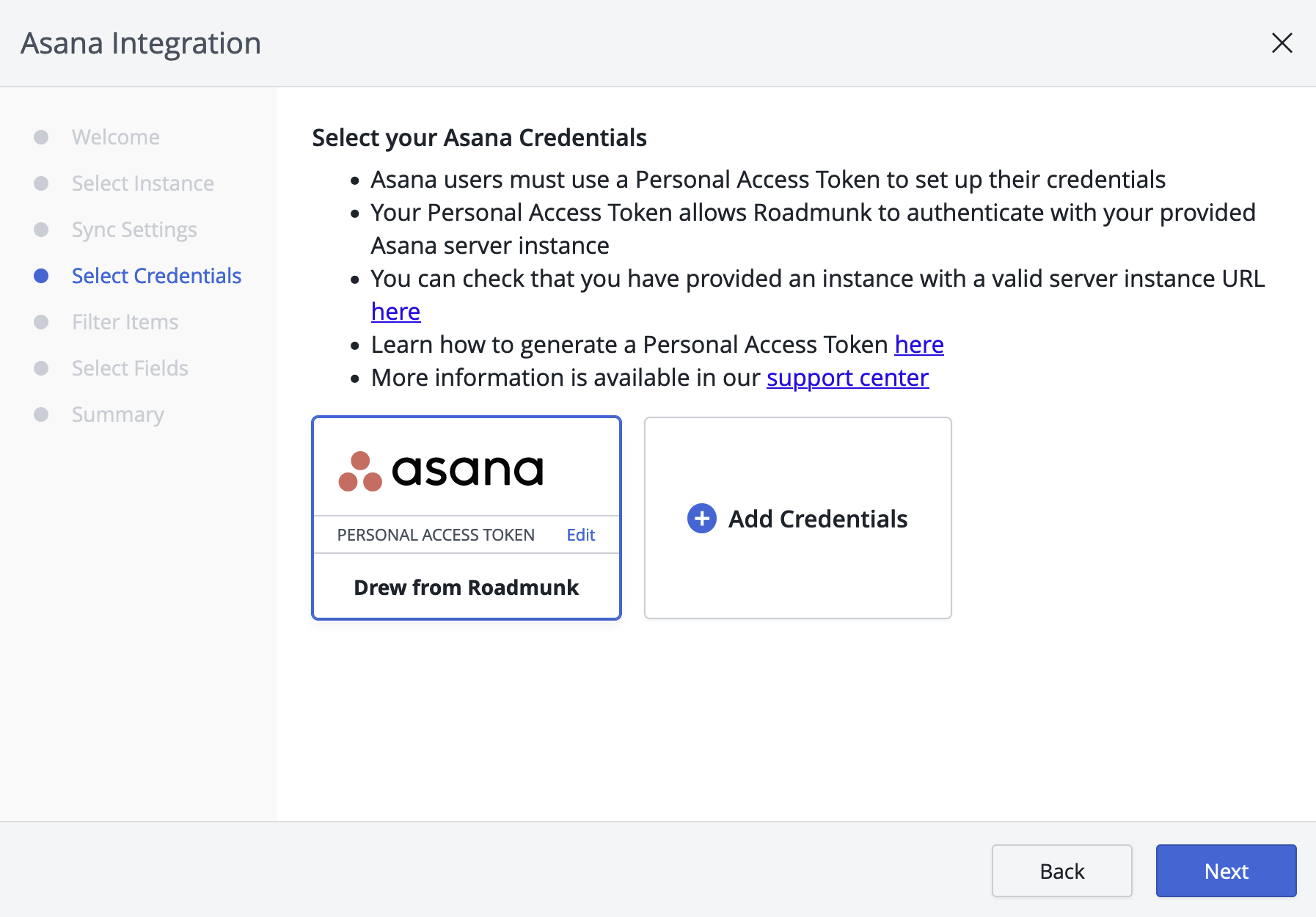
Once your instance has been selected, you'll be prompted to choose your credentials for syncing with Asana. If you haven't previously set up credentials to sync with, please enter the Personal Access Token that was generated in the steps above and apply a Credential Label for future reference.
After these details above have been provided, you will be able to select the project you would like to pull data from and the state of issues being pulled to bring in only the relevant content is being pulled. Once these settings have been applied, you'll be able to specify Start Date & End Date and select the Asana fields to use on your roadmap. While the specified project can't be changed after the setup, the user-defined dates and fields can be updated later if needed.
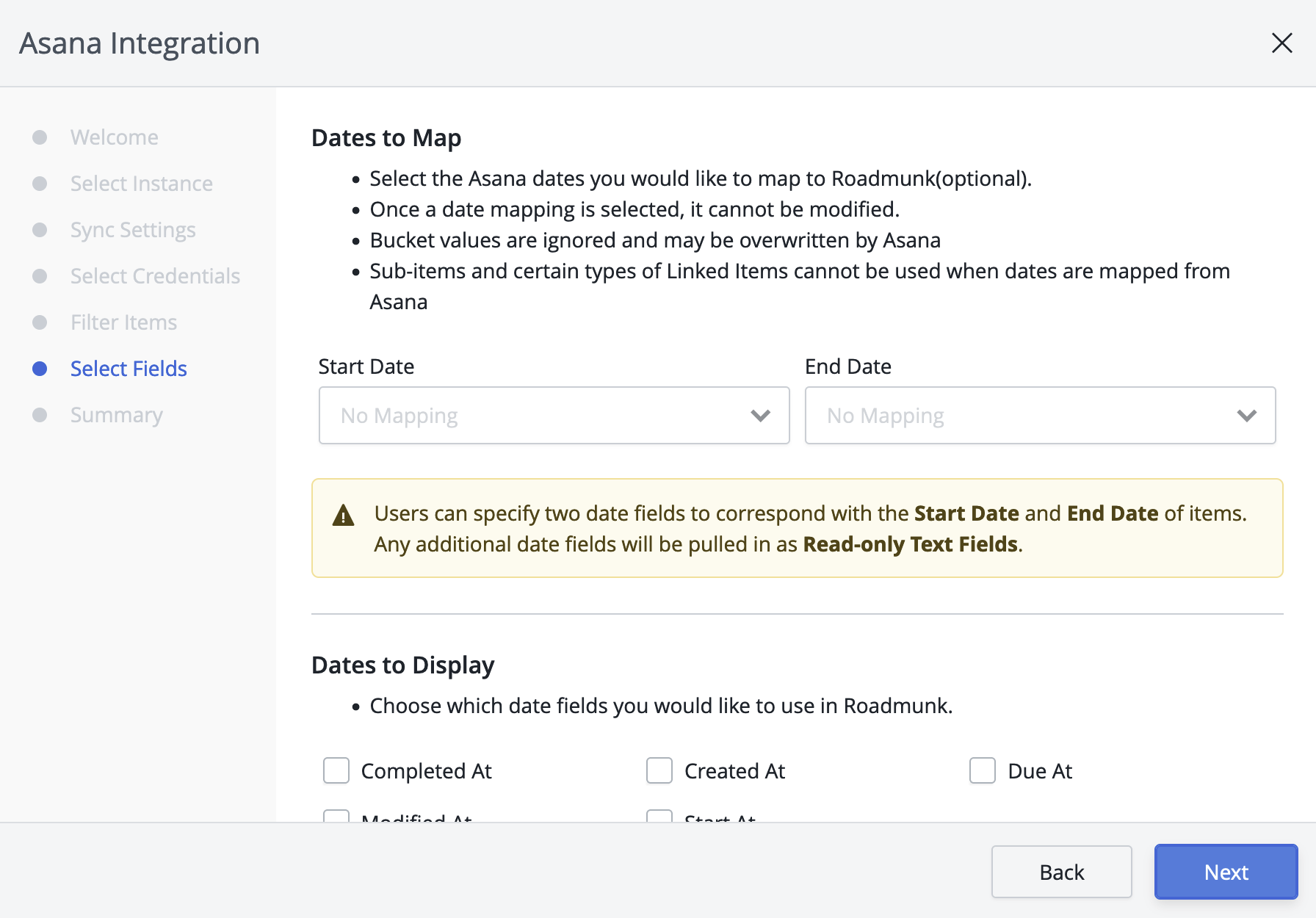
Once you've completed this phase of the setup, you'll be taken to a confirmation screen to let you know that the integration has been set up successfully. After completing the setup wizard, you'll be returned to the roadmap view, where your data will begin to populate from your specified Asana project.
What to Expect After Integrating
Once you've integrated your data from Asana, there will be a few changes to your roadmaps. The following changes may occur after you've set up your integration:
-
All fields pulled from Asana are Account-Level by default - Since the properties and values of these synchronized fields are managed in Asana, we automatically promote them to account-level so they can be accessible as common fields in Portfolio roadmaps.
-
There is an External ID field that appears in the Items Table view - When synchronizing data from Asana, we pull in the ID of each task for reference on your roadmap. This is clickable and linked out to your team's Asana instance, so you can quickly access the respective work item from either your Table view and Item Card.
-
Unable to change or add new projects on a single roadmap - As with our other integrations, we limit connections between roadmaps and third-party tools to be a 1:1 connection. This means that you will be unable to sync multiple projects into a single roadmap; however, you will be able to create multiple roadmaps for each project and use those as sources in a Portfolio roadmap.
-
Additional Date fields will be read-only - Due to a variance in field formatting between Strategic Roadmaps and Asana, any additional Date fields selected which are not mapped to Start and End Dates will be pulled in as read-only text fields.
-
Tokens may expire a set number of days after being created - Unlike API tokens generated for credentials in Jira, which have a longer-term expiry, Personal Access Tokens generated in Asana may eventually expire. While Asana does not publicly list specific expiry limits for their Personal Access Tokens, our team always likes to make note of this with token-based authentication.
Modifying Asana Integration Setup
Once the initial integration setup is complete, the roadmap owner will be able to modify the setup at any time. To do so, from the Items Table or in a roadmap visualization, simply click the Integrations button and select the "Modify Setup" option for Asana from the drop-down menu. This will open the integration setup menu, where you can update sync settings, credentials, filter work items, and select fields.

